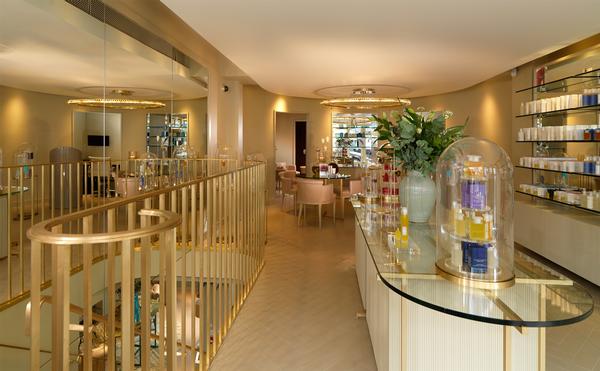
|
 |
Health Club Management Handbook - Spa Foresight 2014

Industry insights

|
|
| Spa Foresight 2014
|

Spa ForesightTM looks at trends and influences, and identifies opportunities for industry growth and diversification. Liz Terry and Katie Barnes report
|
|
|

|
Skills register

Get Enlisted

In 2013, a global initiative by the Global Spa & Wellness Summit set out to define the role and skills necessary for spa managers/directors. This is an important step in developing globally recognised standards for spa management, which will filter down to management education and training.
One area highlighted for further discussion is the potential for “an industry-level accreditation for spa management training programmes/curricula that meet industry standards for quality and content”.
In line with this thinking, UK trade body Habia has already developed a professional register for spa, nail and beauty qualifications to measure existing qualifications against national standards. Launched in October and set to work in a similar way to REPS and EREPS in the fitness sector, it will also involve the voluntary registration of staff who can demonstrate their professional competence – including spa professionals in health club spas that provide treatments.
|

|
More with less

Getting creative

The recession put spa businesses under pressure to innovate without spending, so operators found ways to create value without increasing costs, using the same facilities and staff.
Much of this innovation has been around creating customised or added-value experiences which represent an upsell from standard treatment menus, thereby creating a higher perceived value.
Future innovation is likely to follow this model, as economies rally and spas seek to achieve income growth while maintaining lower cost bases. Indeed, we expect spas to customise more – the little things can make the biggest difference and can be cheap to deliver. Wrap a customer’s feet in a blanket during a massage to keep them snug, steam or press clothes while they’re having a treatment, or give a take-home gift.
|

|
Home spa

Personal spaces

The trend towards home spa treatments will move to the next level, with people choosing to add spa facilities to their homes. This won’t just be the preserve of the super-rich, with more ordinary working people adding gyms, meditation spaces, steamrooms, saunas, infrared rooms and whirlpool baths. The trend towards therapists paying home visits will also continue.
Rather than viewing this as competition, health club spas should embrace consumers’ deeper commitment to a spa lifestyle. By engaging in these wellness routines more of the time, people’s focus on self-care will rise, creating opportunities for the spa to function as an expert hub and repository of knowledge. These consumers are also likely to visit the club more as a result of this higher level of involvement.
|

|
Hand & arm massage

Smartphone relief

People are experiencing pain in their hands and arms from smartphone over-use, and this is creating an opportunity for spas to offer specialist treatments designed to break down adhesions and release tension in these areas.
The hands and arms are largely overlooked during a routine massage, but we predict training bodies responsible for massage protocols will ramp up the proportion of time spent on them, as well as teaching techniques to address these issues. We also foresee a time when hand and arm massage is offered as a standalone treatment.
| |


|

Hand and arm massages relieve the pain caused by smartphone over-use |
|

|
Gluteal treatments

Bottoms up

Glute massages and cellulite treatments are likely to experience an uplift in interest.
A significant percentage of back problems originate in the gluteal muscles, or are made worse by tension and misalignment in this area. In some markets, treatment of the glutes is largely avoided for reasons of decorum. However, when done effectively, massage of the gluteals can release tension that affects the neck, back and legs. Such curative massages could work particularly well for health club spas, providing a clear link between gym, spa and physiotherapy/sports massage.
Meanwhile, targeting cellulite continues to be a key focus for many female gym members. For years, manual lymphatic drainage and suction were spas’ cellulite-targeting options, but technological advances have led to a surge of newcomers such as Mesotherapy, VelaShape, cavitation and cryolipolysis. We expect this market to grow, especially in Italy and Brazil, where demand for cellulite treatments has always been high.
|

|
Repeat business

Keeping loyal

Roughly 80 per cent of sales come from 20 per cent of customers; some spas report levels of up to 90:10. Regular customers are like gold dust, and we’ll see an increased focus on their recruitment and retention.
Regulars spend more, are more likely to use the spa at off-peak times if they’re local, and are important in buffering fluctuations in the number of tourists and ad hoc guests who come through the door.
Reward and membership schemes can keep clients coming back for more. Futurist Edie Weiner says reward points are the second largest currency in circulation worldwide after the US dollar, suggesting loyalty points could become a new currency in spas and an effective way of encouraging repeat visits.
| |


|

Driving revenue: Regular customers account for up to 90 per cent of a spa’s sales |
|

|
Variable pricing

Software support

Using daily deal websites has given some spas a taste of the shape their businesses could be in were they to optimise yield and sell more off-peak time.
However, although daily deals have been good for some spas, they ultimately want better yield without surrendering a percentage of revenue to deal sites.
We’re seeing a new trend emerging, as the leading software providers add yield management functionality to their systems, giving spas the tools to take more direct control of their variable pricing and marketing – meaning less reliance on deal sites. Where deal sites are still used for marketing, spas that use this software will be able to upload new deals directly from their yield management systems. They’ll also be able to design better deals based on the knowledge gleaned from these systems.
|

|
Hospital spas

Provable outcomes

The spa industry is working to develop its credibility and show provable outcomes for its treatments. If this continues, we expect spas to become valid partners for the medical sector, with facilities being developed alongside hospitals – complementing the work already being undertaken by the fitness sector in building closer ties with the medical sector.
The launch of www.spaevidence.com in 2011 – which gives search access to existing research on spa modalities from four medical websites – helped accelerate this process. Research suggests that a number of treatments traditionally delivered in spas are as effective, or more effective than, the allopathic alternative. With pressure on government health budgets, the economics of this will drive decision-makers in the medical sector to seek out collaboration with spas.
Where health clubs have an on-site spa, the opportunity for holistic spa and fitness packages to deliver positive health outcomes are clear.
|

|
Spa Brands

Moving in on retail

For years, spas believed they had to offer product lines that weren’t available on the high street. Although this still works for many, times change and there’s now an awareness that consumers are attracted to brands they trust – all of which has led to two key changes. Firstly, spa brands are working to build consumer awareness and are exploring direct retail sales, with some – such as Caudalie and Aromatherapy Associates – launching high street stores. Secondly, existing consumer brands like Clarins have moved into the spa market and are helping spas boost their retail sales.
Consumer spend on body and facecare products is rising, and this will drive increasing activity in this sector – a good opportunity for health club spas to drive secondary revenue, selling products off the back of treatments.
| |


|

Direct sales: Brands such as Aromatherapy Associates have launched high street stores |
|
Liz Terry has been writing about and analysing the global leisure industries since 1983. She’s editor of Spa Business and Spa Opportunities magazines.
email: [email protected]
twitter: @elizterry
Katie Barnes has a 12-year career in international spa, beauty and health media. She’s managing editor of Spa Business magazine and was launch editor of the Spa Business Handbook.
email: [email protected]
twitter: @SpaBusinessKB
|
|
 |
| Originally published in Health Club Handbook 2014 edition
|
|
 |
|
|
| | | | | | | |
